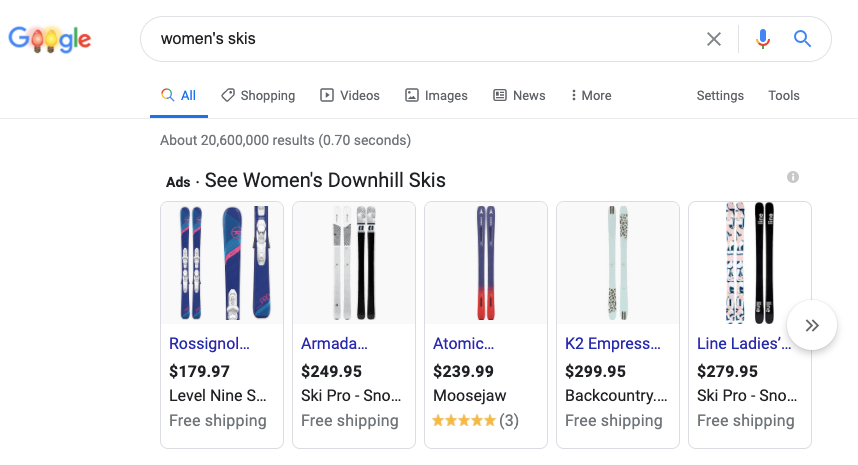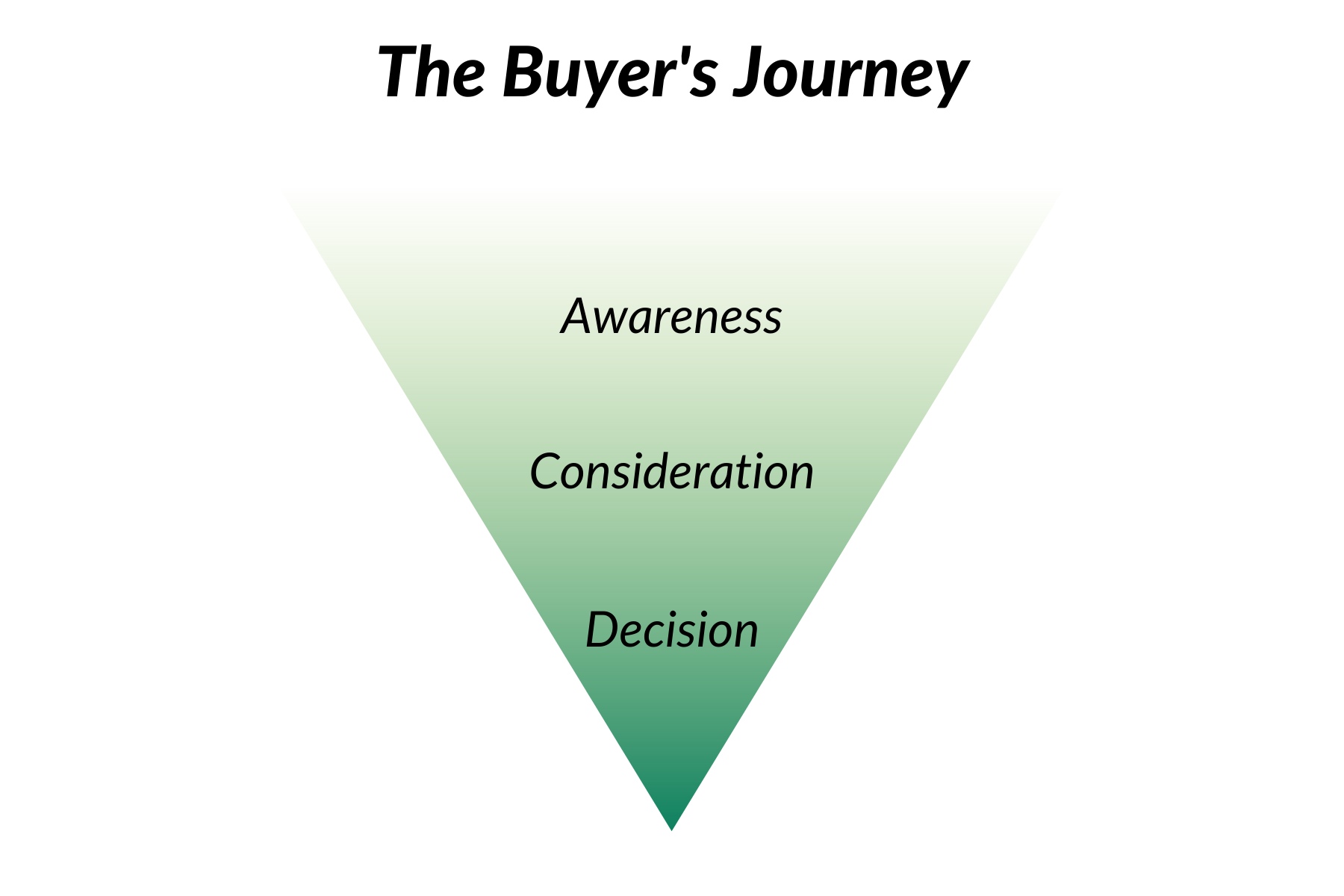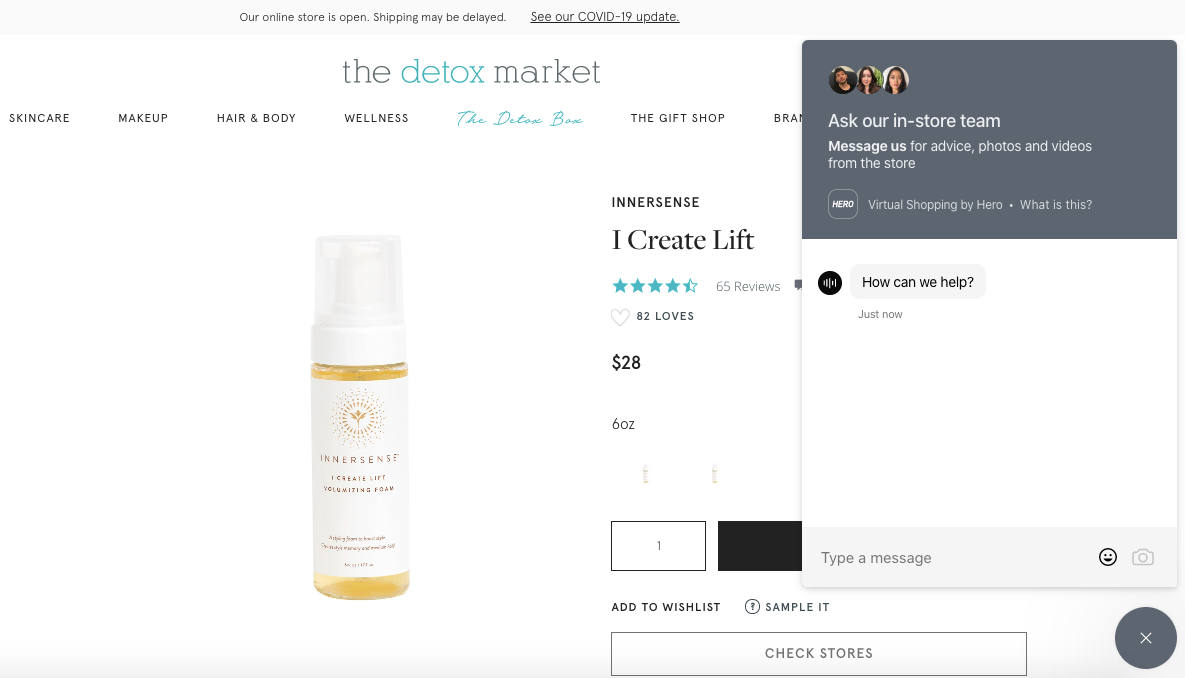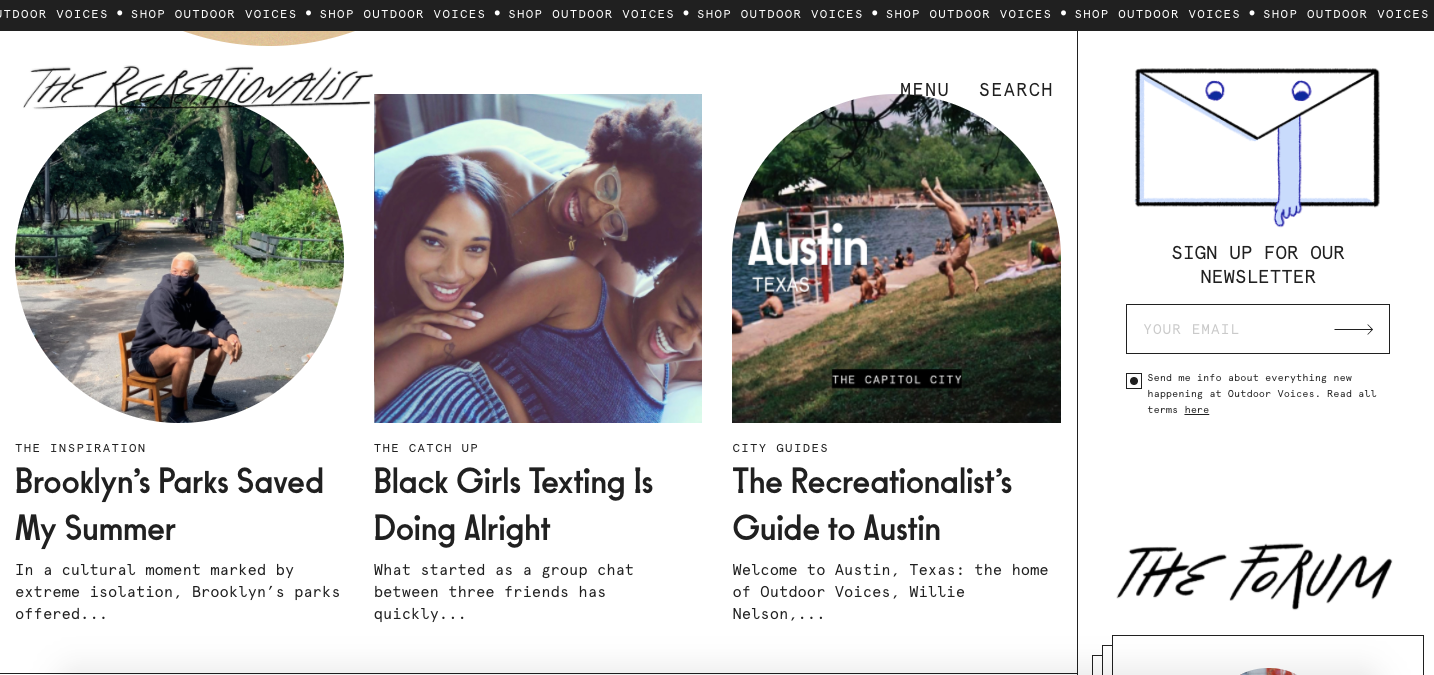Retail psychology is the study of consumers and the factors that influence why, how, and how much they spend.
Every retailer wonders why buyers behave the way they do.
It’s easy to rationalize buying things like food, water, and other items needed to meet basic physiological human needs. But what about buying something for the sake of simply wanting it? That’s where things get a bit more complicated.
For retail store owners, understanding the root of why people make certain decisions around buying—known as consumer psychology—can unlock insights that will help boost sales, build customer loyalty, and so much more.
Plus, it’s safe to say that COVID-19 has had quite an impact on how people spend their money. Therefore, it’s all the more important to know how your customers think.
Trying to get inside your customers’ minds may seem overwhelming or impossible. But we’re here to show you how to build meaningful connections and curated experiences for them using consumer psychology—whether they’re shopping in your physical store or online.
Below, we dive into the fundamentals of consumer psychology and how you can use it to grow your business.
What is consumer psychology?
Consumer psychology is the study of how consumers behave. The American Psychological Association puts it this way: “Consumer psychology employs theoretical psychological approaches to understanding consumers.”
"Consumer psychology is the study of how consumers behave."
Consumer psychology analyzes questions like:
- How do shoppers choose businesses, products, etc.?
- What motivates consumers to buy or choose one product over another?
- How can businesses use marketing to reach their ideal customer?
- What demographical, environmental, or psychological variables influence purchasing behavior?
The list goes on. These types of insights help marketers and business owners learn about their customers so they can better connect with them.
It can be helpful to think about consumer behavior in the context of motivation to find the answers to these questions. In the psychology world, motivation is broken up into two categories: intrinsic motivation and extrinsic motivation.
What's the difference between intrinsic and extrinsic motivation?
- Intrinsic motivation is when people make decisions based on their personal wants and needs.
- Extrinsic motivation is when people make decisions based on external factors.
For example, let’s say Customer A and Customer B are both in the market for a new pair of running shoes to train for an upcoming marathon. Customer A selects the pair in their price range that feels the most comfortable, while Customer B selects a pair based on the brand and style without caring as much about foot and knee support.
So, which customer is intrinsically motivated?
Customer A.
That's because Customer A opted for a pair of shoes that work best for them and will make their training experience more enjoyable. Customer B was extrinsically motivated because they chose a pair of shoes based on brand popularity over comfort.
“People buy luxury brands because it signals to others, and themselves, about their status,” says Tracey Wallace, Director of Marketing at MarketerHire.
“People buy facial masks [the skincare kind] because it signals to others, and themselves, that they care about their skin and self-care. What we buy, and what we don’t, says just about everything about who we are.”
"What we buy, and what we don’t, says just about everything about who we are.”
The role of consumer psychology in marketing
Because psychology is used to analyze the human mind and its functions, it only makes sense that understanding consumer shopping behaviors on a psychological level could help meet marketing and sales goals.
Consumer psychology can be used in a variety of ways in a marketing and sales context by:
- Creating a sense of urgency
- Influencing branding and visuals
- Collecting (and leveraging) social proof
- Building strong customer service experiences
The thing is, consumer psychology is a moving target. Shoppers' expectations change alongside changes in technology and culture, making it all the more important to know how to leverage your customer insights.
"Consumer psychology is a moving target... making it all the more important to know how to leverage your customer insights."
A real-time example of the human psyche’s evolving nature and associated behaviors is the direct impact COVID-19 has had on shopping and buying.
According to McKinsey & Company, “Personal disposable income is not expected to recover to pre-crisis level until Q2 2024 in the US.”
What’s more, consumers have increased the amount of shopping they do online and have shifted to shopping at stores closer to home.
Getting into your customers’ minds will help you craft memorable shopping experiences that keep them coming back time and time again, no matter what’s happening in the world.
Before we jump into how you can leverage consumer psychology for your brick-and-mortar business, let’s take a look at the basics.
How does consumer psychology play a role in the buyer journey?
Buyer motivators are the emotional and factual considerations that influence behaviors around purchasing. Think of them as both subconscious and conscious tick boxes customers move through as they enter different stages of the buyer journey.
There are many different buyer motivators, and they are organized into two categories:
- Product motivation. The factors that drive a customer to choose a specific product or service over other options.
- Patronage motivation. The factors that drive a customer to choose a product from a specific brand over others.
Now, here’s where things get a bit more complicated.
These categories can each be broken down further into two additional categories, emotional and rational:
- Emotional product motivation. When a customer is driven by emotions, like perceived status or impulse, to buy a product, typically without logic or reason.
- Rational product motivation. When a customer is driven by logic or reasoning, like safety or survival, to make a purchase.
- Emotional patronage motivation. When a customer is driven to complete a purchase from a specific brand without logic or reason.
- Rational patronage motivation. When a customer is driven to complete a purchase from a specific brand using reason and logic, like buying from a sale or after doing research.

Now, let’s dive into how buyer motivators play a role in the buyer’s journey.
Awareness
The awareness stage is when customers become conscious of a problem, a need, or a want. Once that awareness is recognized, the customer will prioritize this problem and then conduct their research accordingly.
For example, a customer is looking for new skis for a ski trip next year. The priority of this issue is much lower in May and June than it is in December.

At this point, our customer will likely begin her search for a new pair of skis with a Google search. She’ll start to look at various brands, learn about the differences between all-mountain skis, powder skis, and twin-tip skis, and find out all she can about what type might best suit her needs. This customer cares about finding the right skis for her trip, skill set, and price point.
Consideration
In the consideration phase, customers know they have a problem, want, or need to solve and have taken steps to find a resolution. During this stage, customers will be both comparing and narrowing down their options.
Customers are also doing things like mining customer reviews, feedback, and social proof and hearing opinions from close family and friends with relevant experience.
With customer reviews, feedback, and social proof playing a significant role in the buyer’s journey, it’s best to leverage these insights wherever possible. In fact, according to a survey from BrightLocal, the average customer spends about 13 minutes reading reviews before making a decision.
Customers are also likely visiting stores in person, along with shopping online, to gather further information.
In the case of our ski trip customer, she’s closing in on a decision once she feels like she has enough information. Reviews like this one on the Salomon website can help customers in the consideration stage learn more about a specific product.

Source: Salomon
In addition to reading customer reviews, she’s also visiting ski shops to see options in person and consult with a store associate.
Decision
Once customers have reached this stage, they are likely ready to make a purchase. They’ve analyzed their findings and have landed on a product that’s right for their needs.
A specific combination of buyer motivators—whether emotional or rational, product or patronage—helps customers arrive at different purchase decisions. In the case of our ski trip customer, her unique motivators, like wanting to have the latest and greatest skis or wanting to buy skis well within her budget, will influence her decision.
For brick-and-mortar businesses, learning the motivators that drive your audience to purchase will help you figure out how to help them.

How can brick-and-mortar retailers leverage customer insights?
Direct-to-consumer brands have troves of customer data, enabling them to create exceptional shopping experiences for their customers. But can brick-and-mortar retailers do the same?
Take Shopify merchant LIVELY, for example.
LIVELY is a bra and underwear retailer redefining lingerie by combining style with comfort.
In 2016, LIVELY opened its first physical store to lower the cost of digital customer acquisition. With Shopify, LIVELY built a unique online booking experience called a “fit sesh” that let customers book a slot ahead of time to visit the physical store for their appointment.
This in-store experience allows women to try on different fits and styles that work best for them, per the guidance of a store associate.
Roughly 30% of LIVELY’s in-store revenue comes from these online-to-in-store bra fittings.
The kicker is that not only did LIVELY boost in-store sales in a unique way, but it was able to collect valuable insight into its customers’ behavior online vs. in-store.
LIVELY uses Shopify’s point-of-sale system (POS) across each of its retail locations and can see that its average order value is between 60%–80% higher among customers who book a fit sesh compared to those who simply walk into one of its stores.
"LIVELY uses Shopify’s POS across each of its retail locations and can see that its AOV is between 60%–80% higher among customers who book a fit sesh."
This is just one example of how physical retailers can find innovative ways to learn about their customers.
“The data is there—brick-and-mortar stores will need to put it all together themselves,” says Adrienne Barnes, founder of ANB SaaS Consulting and Content Marketing.
“So understanding what products are selling the best, what pricing works the best, add that info to ‘Why did our customers buy from us?’ ‘Why did they buy this item?’ Put your hard data with your qualitative data—meaning those chats with your customers—and you can have the insights.”
A few other methods brick-and-mortar businesses can use to collect customer data include:
- Surveys and feedback forms
- Talking to customers in person
- Social media
- Focus groups
- Exclusive mini-product launches
“Small brick-and-mortar stores, like boutiques or family-owned businesses, have the added bonus of being local to the community,” says Barnes. “Show up in your community and take every chance you have to chat with your customers. The better you know who your customer is, what motivates them to buy, and what their needs are, the better you can serve them.”
"Small brick-and-mortar stores have the bonus of being local to the community. Take every chance you have to chat with your customers."
4 ways you can leverage consumer psychology to boost your sales
Even small changes to your in-store experience can significantly impact your sales, brand awareness, and customer experience if you're strategic about it.
Here are a few tactics based on consumer psychology you can implement to encourage customers to complete their purchase.
1. Improve your in-store experience
How do customers feel when they walk into your store? Are they hit with your brand? How does it feel to be in your store? What’s the aesthetic? These are questions that can help get the cogs in your mind turning about enhancing your in-store customer experience.
💡 Recommended Reading: Learn how to improve your in-store experience with these 5 tips for offering experiential retail like the big brands (without a big budget).
“Use consumer psychology to understand the buying motivations behind your product, and then create a space that brings that motivation to life,” says Wallace.
“As soon as consumers start to envision themselves in the reality you’ve created, the more likely they are to buy those products.”
A great example of a seamless in-store experience is The Detox Market. In non-pandemic times, customers could visit one of The Detox Market’s six retail locations and book an ultra-personalized appointment with a sales associate. This curated in-store experience resonated well with The Detox Market’s customer base and was a successful initiative.
Once the pandemic hit, the clean beauty collective built an online shopping experience that mirrors its in-store experience.

Source: The Detox Market
Customers can shop virtually via text, chat, and video, as well as ask in-store associates questions in real time as if they were right there with them.
2. Leverage social proof
According to BrightLocal, customers read about 10 reviews before feeling like they can trust a business. What’s more, a whopping 82% of customers read online reviews for local businesses. In other words, social proof—reviews, feedback, etc.—are critical in your customer’s buying journey.
There are countless ways to leverage social proof, like in your email marketing, on social media, in-store, and of course, on your website.

Source: Really Good Emails
This email from Everlane is a simple yet effective way to showcase social proof and encourage users to browse a store or visit in-person.
3. Introduce a loyalty program
Although it may seem cumbersome to launch a loyalty program, there’s a reason why so many brands have them: they work! A loyalty program is a great way to turn first-time customers into lifelong customers.
Outdoor collective REI runs the ultimate example of a successful loyalty program. REI is a co-op—a business that’s managed and owned by those who use its services—that has been around since 1938 and has a commitment to the great outdoors and those who love it.

Source: REI
For just $20, you gain lifetime access to the REI Co-op community, complete with a 10% member dividend, members-only special offers, and much more. This business model has proven to be a highly effective way to build community and brand loyalty.
4. Provide value through other channels
While encouraging customers to purchase your products, it’s just as essential to provide additional avenues of value.
“When you know why your customers behave the way they do, you’re able to market, serve, and sell to them in a more meaningful way that meets their needs, which in turn will help your business grow,” says Barnes.
Athletic clothing brand, Outdoor Voices, knows its customers inside and out, and as a result creates supplemental content that resonates with them via Outdoor Voices’ online zine, The Recreationalist.

Source: The Recreationalist
From blog posts and interviews to a community forum and more, Outdoor Voices understands the content its core audience cares about and has built a brand around those values.
Know your customers, know how to grow
You can learn a great deal from observing your customers’ actions. But don’t stress: you don’t have to be a psychologist to understand consumer behavior.
Knowing how your customers think, behave, and make decisions is extremely valuable information to have, whether you’re creating new products, launching new marketing campaigns, introducing new programs, or looking to sell more units.
Read more
- What is Cost of Goods Sold (COGS) and How Can I Calculate It?
- Retail Design Tips and Trends for Your Store
- Retail Sales Tips: 4 Techniques + 16 Retail Selling Tips to Help You Succeed
- What Retailers Can Learn From The Museum Of Ice Cream’s Sweet Success
- 7 High-Impact Books Every Retailer Should Read [Giveaway
- The 8 Best Podcasts for On-the-Go Retail Entrepreneurs
- What is Retail Marketing? Benefits, Types, Strategies
- What is Visual Search: How Retailers Can Use it to Enhance the Customer Experience
- Beat the Post-Holiday Slump: How to Survive Slow Months in Retail
- The Art of Reputation Management: What Retailers Need to Know About PR





